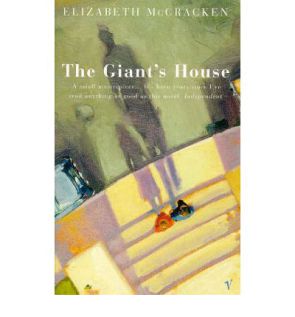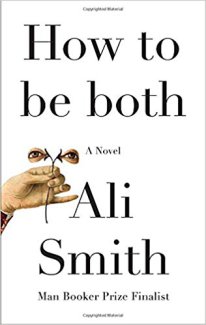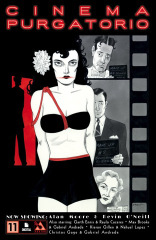First published in 2012
The Giant’s House is told in retrospect from the first person perspective of librarian Peggy Cort. Thirty-five years after her story begins, Peggy is looking back on her life. From the outset, Peggy’s narrative voice is original and startling in places. She is such a charismatic, likeable narrator. Her narrative voice certainly has a distinctive style and is simultaneously chatty and eloquent, allowing the reader to be absorbed into her world from the outset. The novel addresses the audience as ‘you’ throughout which really makes the reader feel part of her story. We are consequently able to identify and empathise with Peggy completely.
 The Giant’s House does primarily deal with a love story, but it goes far deeper than that. The story begins in the autumn of 1950, when James Carlson Sweatt, the ‘giant’ of the novel, walks into the library in which Peggy works, joined by his teachers and classmates. Peggy is twenty-five years old when this happens, and James only eleven. By this point, James is already six foot four. The plot of The Giant’s House is original in that it transcends so many boundaries. In the 1950s, particularly in small-town America, many would not be aware of James’ medical condition which causes him to continually grow at an alarming rate. His classmates and other members of society treat him as an outsider. They are aware of his height towering above them but they do not really notice him as a human being. As the novel progresses, James becomes somewhat famed for his height and people begin to make special trips to Brewsterville in order to spot him.
The Giant’s House does primarily deal with a love story, but it goes far deeper than that. The story begins in the autumn of 1950, when James Carlson Sweatt, the ‘giant’ of the novel, walks into the library in which Peggy works, joined by his teachers and classmates. Peggy is twenty-five years old when this happens, and James only eleven. By this point, James is already six foot four. The plot of The Giant’s House is original in that it transcends so many boundaries. In the 1950s, particularly in small-town America, many would not be aware of James’ medical condition which causes him to continually grow at an alarming rate. His classmates and other members of society treat him as an outsider. They are aware of his height towering above them but they do not really notice him as a human being. As the novel progresses, James becomes somewhat famed for his height and people begin to make special trips to Brewsterville in order to spot him.
Peggy’s sheer sense of loneliness is apparent from the outset. She has moved to Brewsterville, an unremarkable town in Cape Cod, Massachusetts, after finishing her course at library school in Philadephia. It seems that she is striving for something new – a fresh start away from everything she has ever known. Peggy, a self-confessed ‘spinster’ who has never before fallen in love, soon cares incredibly deeply for James. She does not just see him as someone too tall to fit in, but as a beautiful young boy who deserves to be loved and respected by his peers and elders. She begins a series of good deeds which eventually allow her to infiltrate James’ life, soon becoming a clear part of it. She begins by finding him different books on his weekly library trips and helping him to research other ‘giants’. The love which Peggy feels for James blossoms slowly at first. The prose is compelling, really making the reader believe in Peggy’s plight.
The Giant’s House transcends different stages in the lives of James and Peggy – stages both lived together and apart. The essence of the novel is about being different, being an outsider, trying so desperately to fit in even though you know your battle will ultimately be fruitless. The story itself builds to an incredibly sad crescendo and really jolts the reader’s heart.
Other characters feature in the novel but James features most heavily of all. He is the most pivotal character of The Giant’s House. The other characters, including Peggy, orbit around James and his wellbeing. He is their common link, an intrinsic fibre of the story and the bond which ties everything together. He really begins to come out of his shell as the story unfolds. The other characters who form different kinds of relationships with Peggy are Astoria Peck, a colleague at the library in which Peggy works, Mrs Sweatt, and Caroline and Oscar Strickland. James’ mother, Mrs Sweatt, seems a little troubled from the outset of the novel. Nobody knows her first name and she is consequently just known as ‘Missus’. She is described as being rather a heavy drinker. Caroline Strickland is the tomboyish aunt of James. She is friendly and humorous in the way in which she says things so matter-of-factly – for example, ‘Well Peggy Cort… You’re not an unpleasant woman’. Oscar Strickland is Caroline’s husband and James’ kindly uncle. At the start, James’ father does not feature in the story. He is being brought up by his mother, Aunt Caroline and Uncle Oscar in a white house painted with flowers.
The entire host of characters in The Giant’s House is incredibly believable. They fit together like people in a real twentieth century society. All of the characters are intriguing in their own ways. Despite the fact that they all live in the same small town, they are remarkably different from one another. This is another reason why they interact so well within the story. None of their dialogue, speech patterns, turns of phrase or elements which build their three-dimensional characters overlap in any way. Their interactions are always fresh and surprising, and nothing mundane is relayed in McCracken’s writing. Her dialogue is wonderful. She adds an extra depth to her characters by making them speak so realistically. Her dialogue becomes intrinsically linked with the bare bones of each character until they are suddenly fully fleshed out individuals walking around the town of Brewsterville as though they have always been there.
With regard to the writing style of the novel, McCracken is unlike many of the contemporary novelists publishing today. The first sentence of The Giant’s House – ‘I do not love mankind’ – immediately places a barrage of questions into the mind of the reader and makes us empathise with Peggy immediately.
The novel is split into three separate parts and the prose itself is haunting in places. The novel is set in the unfolding 1950s but McCracken writes in such a way that the setting and plot are vivid and alive. The reader feels that they are part of the action rather than wholly removed from it.
With each reading of The Giant’s House, new details seem to glow from the page. It is one of those novels that deepens and affects the reader more each time it is read. Something new is taken away with each consecutive reading of the novel. The Giant’s House is a story which seems to grow with the reader, and is a novel which deserves to be recognised as one of the highest peaks of modern literature.
Purchase from The Book Depository
Advertisements Share this:





